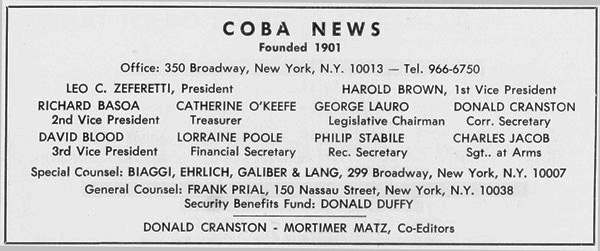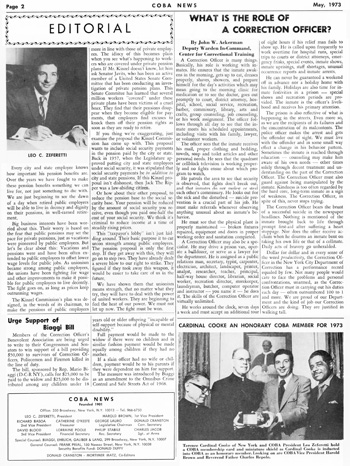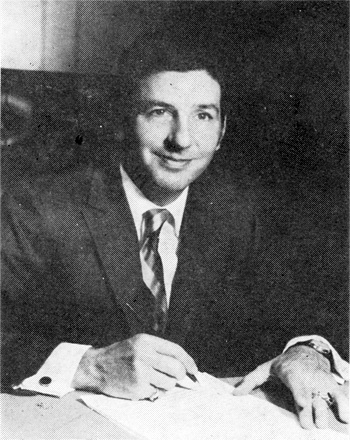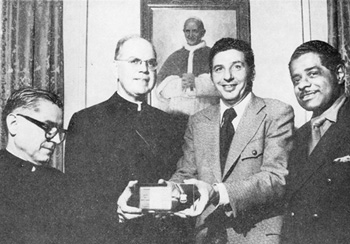In the early summer of 2010, Errol D. Toulon, a Monroe College professor and retired Correction Academy excutive officer, made available to this website a copy of that issue. [See image of Page 2 at right.] Toulon also had been a first vice president of the Correction Officers Benevolent Association. From that issue copy, the New York Correction History Society webmaster has created this four-page web presentation of extracted images and texts, one web page for each of the issue's four printed pages. Near the bottom of each of the presentation's four web pages is a descriptive list of links to all its pages. 
By John W. Ackerman A Correction Officer is many things. Basically, his role is working with inmates. He ensures that the inmate awakens in the morning, gets up to eat, dresses properly, shaves, showers, and prepare himself for the day’s activities which may mean going to the morning clinic for medication or to see the doctor. goes out promptly to court, district attorney, hospital, school, social service, recreation, barber, commissary, library, arts and crafts, group counseling, job counseling, or his work assignment.
The officer sees that the inmate receives his mail, proper clothing and bedding, towels, soap and toilet articles and other personal needs. He sees that the quadrant or cellblock television is working properly and no fights ensue about which program to watch.
He patrols the area to see that security is observed, that fights don’t break out, and that inmates do not molest or steal each other’s commissary. He loooks out for the sick and isturbed -- suicide prevention is a crucial part of his job. He must make referrals whenever observing anything unusual about an inmate’s behavior. He must see that the physical plant is properly maintained -- broken fixtures repaired, equipment and doors in proper working order and sanitation completed. A Correction Officer may also be a specialist. He may drive a prison van, operate a bulldozer, or serve as a lawyer for the department. He is assigned as a public relations man, secretary, typist, carpenter, electrician, architect, landscaper, printer, analyst, researcher, teacher, principal, half-way house director, librarian, social worker, recreation director, storekeeper, laundryman, butcher, computer operator and instructor — you name it he does it. The skills of the Correction Officer are virtually unlimited. He works around the clock, seven days a week and must accept an additional tour each others commissary. He looks out br the sick and the disturbed — suicide prevention is a crucial part of his job. He must make referrals whenever observing anything unusual about an inmate’s behavior. He must see that the physical plant is properly maintained broken fixtures repaired, equipment and doors in proper working order and sanitation completed. A Correction Officer may also be a specialist. He may drive a prison van, operate a bulldozer, or serve as a lawyer for the department. He is assigned as a public relations man, secretary, typist, carpenter, electrician, architect, landscaper, printer, analyst, researcher, teacher, principal, half-way house director, librarian, social worker, recreation director, storekeeper, laundryman, butcher, computer operator and instructor — you name it he does it. The skills of the Correction Officer are virtually unlimited. He works around the clock, seven days a week and must accept an additional tour of eight hours if his relief man fails to show up. He is called upon frequently to work overtime for hospital runs, special trips to courts or district attorneys, emergency frisks, special events, inmate shows, inmate uprisings, staff shortages, unusual occurrence reports and inmate arrests. He can never be guaranteed a weekend off in advance nor a holiday home with his family. Holidays are also time for inmate festivities in a prison — special shows and recreation periods are pro- vided. The prison is also reflective of what is happening in the streets. Even more so, as we are the recipients of its failures and the concentration of its malcontents. The police officer makes the arrest and gets the offender out of sight. We must live with the offender and in some small way effect a change in his behavior pattern. Sometimes the inmate is reached through education -- counseling may make him aware of his own needs -- other times solely through decent treatment and understanding on the part of the Correction Officer. The Correction Officer must also guard against being manipulated by the inmate. Kindness is too often regarded by the hard core, long-term inmate as a sign of weakness. The Correction Officer, in spite of this, never stops trying.
Nothing is mentioned of the inmate brought back to life through prompt first-aid after suffering a heart stoppage. Nor does the offler receive acclaim when he disarms an inmate bent on taking his own life or that of a cellmate. Daily acts of bravery go unheralded. Dollar for dollar and in every sense of the word productivity, the Correction Officer in the New York City Department of Correction has a performance record equaled by few. Not many people would care to face the problems and personal confrontations, unarmed, as the Correction Officer must in carrying out his duties each day — often outnumbered 100 to 1 and more. We are proud of our Department and the kind of job our Correction Officers are doing. They are justified in walking tall.  WEBMASTER NOTES: Former Rikers Island chaplain Fr. Charles Repole, long-time friend to DOC staffers and affiliated groups appears in the above photo of COBA leaders with Cardinal Cooke. Elsewhere on this website can be accessed another photo of Fr. Repole with DOC union leaders. Off-site, Page 5 of the CCA's Captain's Quarterly, Fall 2003 issue features a photo and story on Fr. Repole celebrating at Sacred Heart Catholic Churh, Yonkers, his 60th year as a Capuchin priest.
Also visit on this site:
|





